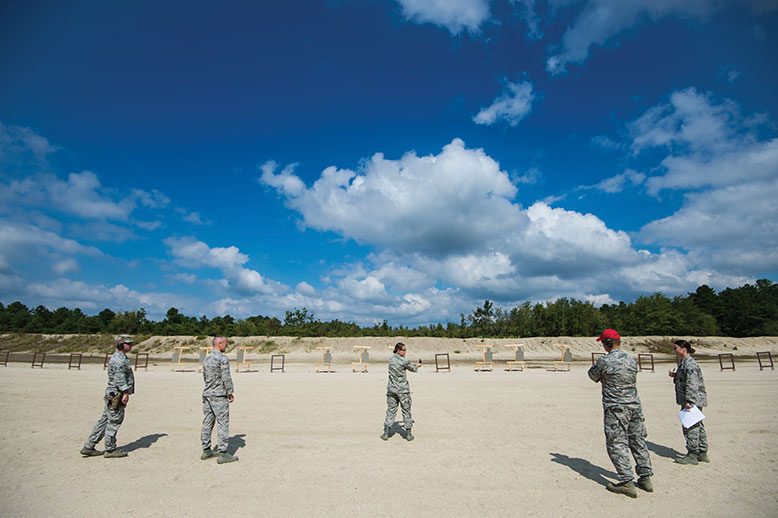
The reason McGuire Air Force Base got the lead name comes down to another key difference among the original three bases. While Dix comprises mostly Department of Defense employees and is primarily focused on training Army National Guard and Reserve forces, McGuire, while smaller in size, has a much larger percentage of active-duty service personnel.
Under the jurisdiction of the USAF Air Mobility Command, McGuire was developed in 1941 as Air Corps Ferrying Command. It closed for a short while after WWII and then reopened in 1948 as McGuire Air Force Base. Known as the Gateway to the East, McGuire’s original core responsibility was to provide global air mobility during World War II.
Today, McGuire includes more than 3,100 officers, enlisted and civilian personnel, all under the command of the 87th Air Base Wing, which oversees management of the installation and is charged with making sure its service members are mission-ready to support U.S. combat and relief operations around the world. It’s a multifaceted and complex operation encompassing thousands of moving parts.
“A lot of relationships changed after the merger,” says Colonel Andrew Keane, an Air Force career man who has served at the installation in various capacities since 1992 and is currently 108th Wing Commander of the New Jersey Air National Guard. “Before we became one, the circles [of Dix, McGuire and Lakehurst] were pretty clearly defined and didn’t touch a whole lot. But those circles have since gotten a lot larger, which means more overlap and more efficiency.”
For example, Keane points out that when airmen needed to partake in mandatory physical training exercise before the merger, they had to travel to Andrews Air Force Base in Maryland. “Now they just drive across campus [to the Dix side],” says Keane. “Not only is it less expensive, but it saves our airmen from spending yet another night away from home.”
Finally, there’s Lakehurst, the smallest of the three bases and the one that serves as JB MDL’s naval component. Commonly known as the site of the Hindenburg disaster in 1937, Lakehurst consists of an impressive airfield with several large runways. Today, it’s primarily used for what’s known as Naval Aviation Development.
All told, JB MDL now occupies a massive footprint throughout Burlington and Ocean counties, a remarkable swath of land that offers invaluable proximity to New York City, Philadelphia, Washington, D.C., and the Atlantic coast. The location has numerous strategic benefits. First, it allows the military and federal and state agencies to deploy troops to key U.S. cities in the event of a disaster or national emergency. Second, it allows access to the resources found in those major cities, including infrastructure and personnel. Finally, the proximity to coastal ports means the joint base can act as a swift mobilization center for international transport and deployment.
That’s not just theory. During the height of the wars in Iraq and Afghanistan, the installation was one of the primary “power projection platforms” for mobilizing Army Guard and Reserve soldiers to fight overseas. And while a small percentage of soldiers still deploy from here, its primary function is maintaining what’s known as sustainable readiness—military speak for making sure the finely tuned machinery and personnel of the U.S. Armed Forces (including Coast Guard and National Guard units) are prepared for any conflict, relief effort or general-assistance initiative around the world.
“It’s remarkable that we have the only tri-service joint base in the nation right here in South Jersey,” says U.S. representative Tom MacArthur (R-Toms River). “It’s a national hub for air mobility, training development, employment and technology, and it’s a big deal for our nation’s military readiness. Soldiers and airmen and Marines and members of the Coast Guard are all rubbing shoulders, and it’s just a very unique military asset for the United States and an economic asset for New Jersey.”
Once inside the seemingly endless fence, driving around JB MDL is at once overwhelming and oddly mundane.
- An interior at the live-action training facility includes smoke, scent and audio elements that simulate combat conditions. Photo by Matthew Wright
- Abandoned buildings on the base serve as training grounds for urban warfare. Photo by Matthew Wright
- Colonel Andrew Keane, 108th Wing Commander of the New Jersey Air National Guard, alongside a KC-135 Stratotanker. Photo by Matthew Wright
- Trainees in a wooded area of the base take a break from the pistol range. Photo by Matthew Wright
- A plastic target stands in for the enemy on the training grounds. Photo by Matthew Wright
- A vast warehouse filled with medical supplies that can be deployed for disaster relief. Photo by Matthew Wright
- Air National Guard trainees in the pool at nearby Rowan College at Burlington County. Photo by Matthew Wright
- Photo by Matthew Wright
- Then strip off the heavy, wet garments and toss them out of the pool without touching the bottom or the sides. Photo by Matthew Wright
Entering through one of its secured main gates—manned at all times by several armed servicemen and women—one expects to be greeted by overt displays of military might. One envisions platoons of soldiers marching in formation and convoys of tanks and Humvees lumbering down dusty roads. Instead, a visitor is transported into a veritable municipality that feels like equal parts college campus, corporate business park and yes, military installation.
Two-lane streets intersect at stoplights, stop signs and traffic circles. Hundreds of nondescript, brown brick buildings—most identified by numbers if not by names—define clusters of activity. There are parks and playgrounds, outdoor running tracks, soccer fields, even a golf course. Employees in shirts and ties are as common as men and women in Army or Air Force fatigues.
At the Morale Welfare and Recreation area—centrally located between Dix and McGuire—one finds all the trappings of a 21st-century community. Two gas stations. A Burger King. A Wells Fargo bank. A large commissary supermarket attached to a mall-style food court that includes Arby’s, Boston Market, GNC, GameStop and Popeye’s. It seems like any old stretch of New Jersey suburbia.
“I hear that a lot,” says Staff Sergeant Shawn Morris, a member of the Army Reserve and public-affairs officer for the 99th Regional Support Command at Dix, a civilian position he’s held since 2010. “I brought my cousin here last year because he’d never been on a military installation. He said he thought he’d see something out of the movies. You know, tanks and troops marching in cadence. But when he got here, he said it looked more like a generic office park. So yeah, it’s not like the movies.”
That’s not to say the installation lacks obvious military presence. Along McGuire’s massive flight line, giant KC-10 and KC-135 refueling planes and C-32 and C-17 Globemaster III military transport aircraft rest on runways. Occasional convoys of desert-brown Humvees do indeed move through the heavily trafficked streets. Airmen and Army soldiers can often be seen busily unloading trucks or preparing for a tactical training exercise. And at times—especially on weekends designated for monthly Reserve duties—you’ll spot soldiers on athletic fields, parking lots and training areas practicing formations with spectacular precision.
“It really is like a small city here,” says McKie, who has served on numerous bases across the country. “There’s a culture and even subcultures within that. This is our tribe.”
To that end, JB MDL is not one place any more than any large city is a single place. It’s a metropolitan microcosm comprising myriad responsibilities, personalities, lifestyles and perspectives. But unlike the outside world, everyone here is singularly focused on the role he or she plays in relation to the whole.

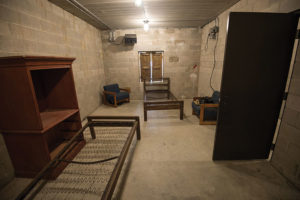
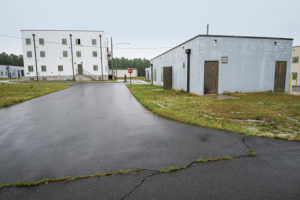
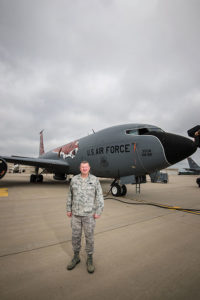
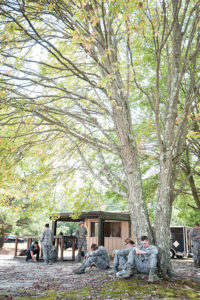

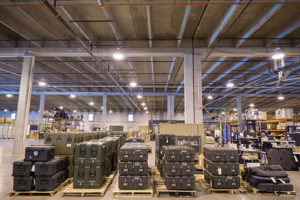

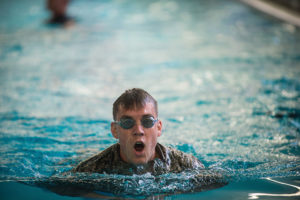
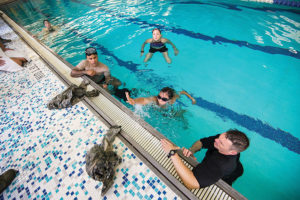
You did a dis-service to the Lakehurst portion of JB MDL. The only mention was about the Hindenburg. There is so much more that goes on there. Like they are the leading installation that takes care of the Launching and Arresting portions of Aircraft Carriers, manufactures and overhauls tons of equipment, has large testing and engineering facilities etc…. Maybe you omitted them because there is a small portion of actual military personell. However, they train and learn how to operate the equipment here.